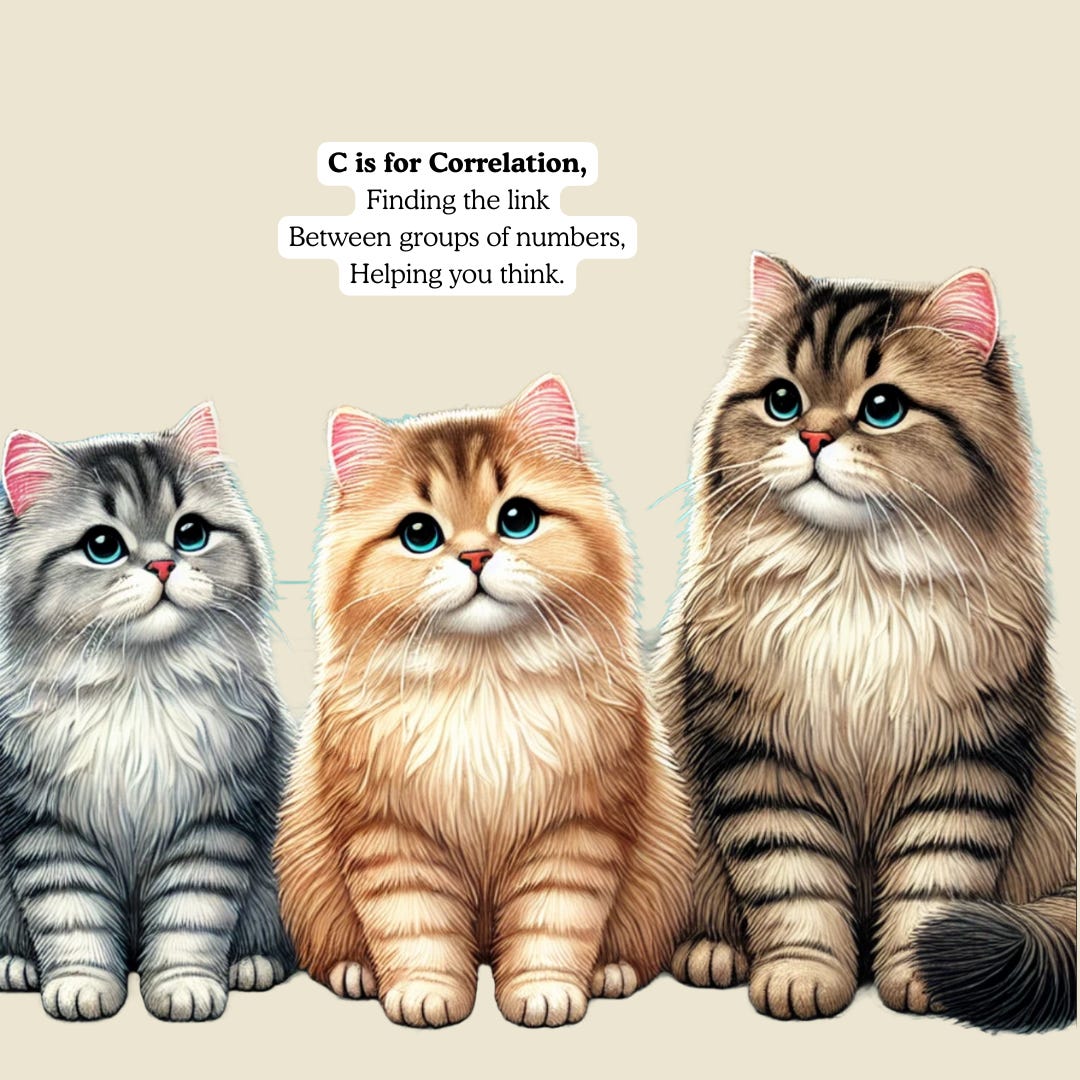This is part of a book project called: The ABC’s of Statistics… with Cats. If you’re new here or not sure of what I’m talking about, see my previous post. My plan is to release a page each week on Instagram with more details in this newsletter. It’s written with kids in mind, but I’ve also included some notes to grown-ups in italics 💁🏻♀️.
C is for… Cat? Cowboy? Corn?
Explain like I’m five(-ish)
In statistics, when we say two things have a correlation, it means that when one thing changes, the other thing changes in some way. For example, if you notice that the more time you spend practicing your soccer skills ⚽️ the better you get at scoring goals, that is a positive correlation.
But sometimes, things can move in the opposite direction. Imagine if every time you eat more candy 🍬, you don’t feel so great. In this case, as one thing goes up (eating candy), the other thing goes down (how great you’re feeling). This is called negative correlation.
Other times, two things don’t seem to move together in any way. Imagine you’re comparing two things: kids’ math scores and their shoe size👟. A bigger shoe size doesn’t mean you’ll get a higher math score — or a higher math score doesn’t mean your feet are growing! This is a case of no correlation.
💁🏻♀️ Correlation doesn’t necessarily mean causation. I’m not explaining the difference here, but it’s something to keep in mind.
Fun example: Balloon buddies 🎈
What you need: 2 balloons (one for you and another for a friend) and a long string or ribbon.
How to play:
Blow up both balloons and tie them at the end of a long string. Each kid should hold the string at the same height. Now, the balloons are like your little buddies.
Stand close to each other, holding your balloon buddies. Now, gently blow on your balloon. What happens to your friend’s balloon? It probably moves away too, just like yours! This is like a positive correlation — when one balloon moves, the other one moves in the same direction.
Now, stand far apart and start moving the balloons in opposite directions. Notice how your balloon goes one way while your friend’s balloon goes the other way? This is like a negative correlation — when one balloon moves up, the other moves down.
How would you use your balloon buddies to show no correlation?


